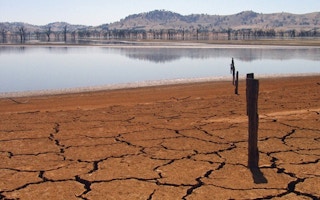Speaking in economic terms to those that control the purse strings of the nation is the only way our environment will receive the attention it deserves.
Many of the most valuable things in life are priceless. A day trip to the beach at this time of year with your family is an essential Australian way of cooling off. Long days on the sand and in the surf, probably catching way more sun than recommended, returning home tired, hungry and salty. Truly priceless experiences.
Although a beach can’t be bought from a supermarket, we all know it has immense value.
Whether we visit once a year, or spend all summer there, Australians love the beach and most of us want our kids and grandkids to be able to experience the same benefits the ocean and coastline have given us.
Analysis by the Australian Conservation Foundation shows Australians also love their rivers. In fact, restoring the rivers of the Murray-Darling Basin to good environmental health is worth $9.8 billion to Australians.
Although this massive number represents unpriced value, it certainly doesn’t mean these are not real values.
The economy would likely fall over if people stopped doing valuable work that doesn’t get priced. Take volunteering for example. Its value is immense. Aged care, child care, sporting clubs and schools all rely heavily on volunteers and would be in crisis without them.
In fact, volunteering has been valued in terms of the unpriced services provided that would otherwise need to be payed for at $16 billion per annum.
Our work conservatively estimates that $9.8 billion is roughly what a protected and restored Murray-Darling is worth to Australians, simply for the sense of satisfaction and wellbeing it provides.
This massive number derives from a report undertaken for the Murray-Darling Basin Authority released late last year, which set out the data and methods to calculate these values.
Unfortunately, to date these values have been ignored. Irrigation industry lobby groups have massively overstated the costs of the proposed Murray-Darling Basin Plan, while massively underselling the benefits.
We’ve heard so much to date about the potential costs of water reform in the Murray Darling Basin. What about the benefits? Is the Basin Plan a cost-benefit analysis, or merely a cost analysis?
The rivers and wetlands of the basin provide essential services, for free, to farming communities - storing water, filtering water, delivering water, managing salinity, habitat for insect eating predators and pollinators.
What’s that worth? Well, in addition to the $9.8 billion, across 16 significant wetlands of the Basin (of around a total of 30,000 Australian wetlands), these services are worth $2.1 billion in our conservative estimate.
Yes, it is a conservative estimate. The Australian Bureau of Statistics estimates that the rivers, wetlands and floodplains of the Murray-Darling provide $187 billion in ecosystem services annually.
But is this real money? Well, let’s look at the flipside - what if we destroy the environment that provides these services for free?
A poorly managed environment has very real costs - salinity in the Basin costs around $300 million each year. Wetlands in lower Murray dairy country provide water filtration that would cost up to $12,000 per hectare to replace.
This is as real as money can get. In fact these examples show a healthy environment isn’t just a nice thing to have, it’s essential to the economy of the Basin.
So the prudent way of managing our Basin is to plan to avoid these costs. Poor environmental management is also poor economic management. Set out this way, we begin to understand the complex web of benefits and costs in restoring the Murray-Darling to health.
To achieve a decent plan for the Basin - one that truly looks across social, economic and environmental costs and benefits - all these values will need to be quantified, understood and on the table.
Pretending that business-as-usual is an option is a fallacy. Business as usual - a further deteriorating river system - costs communities, farmers and other regional industries dearly, especially in the face of a drying climate.
The best opportunity to create a resilient environment and strong rural economy is to support and revive the dying environmental assets that underpin them. This is the best and only chance for long term economic and community wellbeing across the Basin.
The writer, Simon O’Connor, is the Australian Conservation Foundation’s economic adviser
This article originally appeared in ABC News. It has been reprinted with permission.









